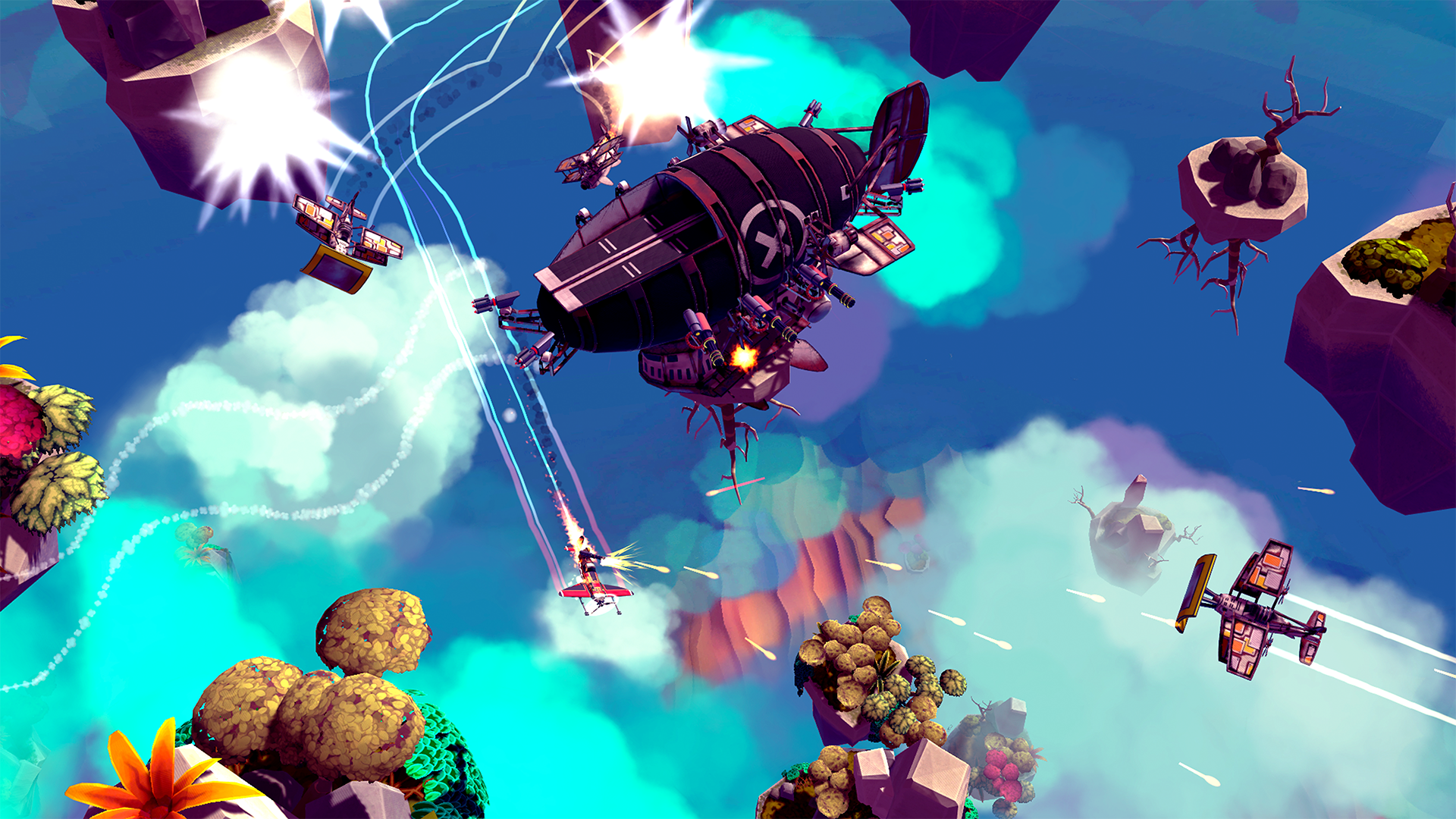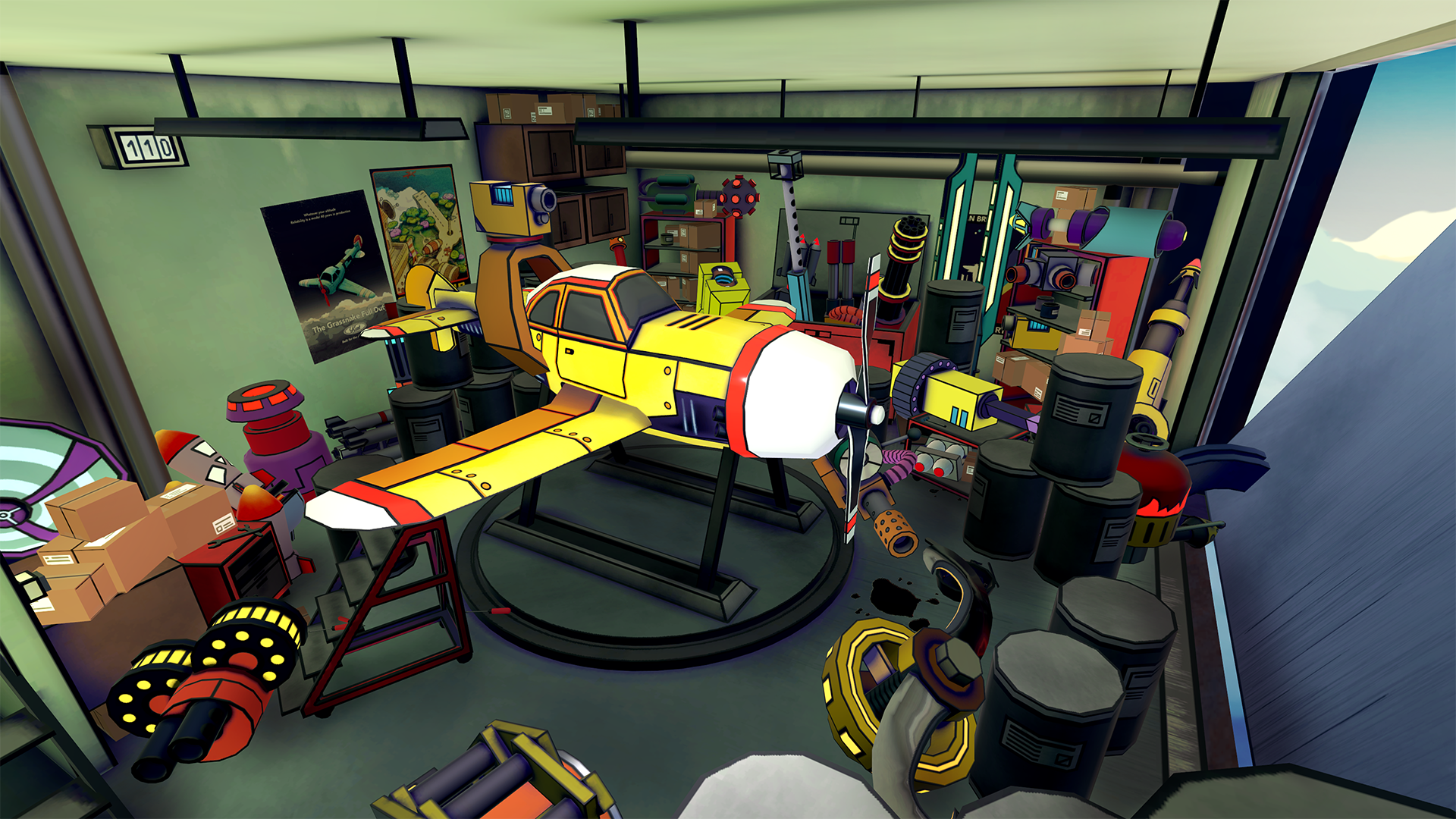Airheart: Tales Of Broken Wings Review
Awesome visuals and sound in this rogue-like airplane adventure.
In the midst of an indie scene that relies too much on known formulas like the platformer genre to the point of exhaustion, Switzerland based Blindflug Studios AG came up with something slightly innovative and fresh with Airheart: Tales Of Broken Wings. It presents an interesting and original fictional universe, and an experience that both looks and sounds awesome, although it can feel a bit frustrating and repetitive.
At its core, Airheart: Tales Of Broken Wings is a rogue-like airplane action game where players take control of Amelia, a girl who dreams big and wants to conquer the skies, and fill her late father’s dream of hunting the legendary Sky Whale. Yes, this is a universe where cities float in the sky and “sky fishing” is a common craft to earn a living. As we progress through the game, we’ll get resources and money to buy new airplane parts and craft our own improvements.
Each level represents a higher layer of this society, and the higher we get, the more dangerous it is to skyfish and keep advancing. Pirates appear in larger numbers as we ascend and dare to explore areas farther away from Granaria, the main city. Amelia’s desire to reach the stratosphere and hunt her Moby Dick will prove a harder task than it sounds like.

The first two levels aren’t really a challenge, as the first one has no pirates or aggressive turrets in it, while the second one features just a handful of them. But even a missed shot that lands on a passerby plane will trigger the cop-planes to follow us and hunt us down, almost always forcing a retreat to Granaria to start our ascension once again.
The lack of fast travel to cleared locations, that is without any remaining fish to catch or treasure to loot, forces us to memorize where the access points for the next layers are and just traverse the ones we’ve already emptied each time we go back and touch base to craft something, secure our earnings or buy new gear. This is really cumbersome.
Each layer is a different, amazing-looking scenario, not procedurally generated, and with a fixed amount of fish population, pirates and secrets. So there’s really no point in going back to those once you’ve cleared everything of value from them.
Every time we go up the music changes and gets more upbeat in tone, which really sets the mood for every new challenge. The soundtrack reflects the freedom of flying around the limitless skies and the action of facing new and more numerous amounts of enemies. Truth be told, the electro music of this game is great.

The fixed top-down camera angle worked for me, but I often times felt a little bit concerned about seeing a plane or a structure appear at the edges and surprise me, as our plane’s health is limited and once we run out of it we’ll go down. And if that happens and we aren’t able to crash on Granaria, it’s game over and we have to start again from scratch.
Controls on PS4 are quite simple and feel solid. Apart from moving there are only two other actions: shoot and hook. Our plane comes with a built-in hook that allows us to snare enemies, remove armor plates from turrets and large planes, and to drag fish or other types of loot.
I found myself a bit discouraged on equipping my hard earned new engines, wings or weapons, as going down and even being able to crash on the city will sometimes still punish us by losing our parts and loot. So I decided to save my precious and powerful stuff for when it mattered, whenever that was. And it turned out to be pretty soon, as layer 4 features the game’s first “boss”: a pirate zeppelin carrying turrets and armor, and surrounded by too many pirate planes.
The uncertainty of the situation made me put off equipping my good stuff, too afraid of losing everything. Eventually I beat the bad boys with the standard, non-tinkered plane, asking myself if the risk-reward system was balanced or broken. After constantly avoiding using my bought gear and crafted stuff, I tend to incline myself to the latter.

And that takes me to the crafting system. Much like the classic board game Mastermind in which we had to guess our opponent’s secret code by trial and error, with a limited amount of guesses to work with and feedback to know if we were in the right track, Airheart’s system is pretty much the same. We don’t know which recipe results in which material or object, so trial and error is the only way of discovering new formulas.
We do get to know which crafting materials were correctly used for an unknown formula, allowing us to progressively get to unlock them with certain ease. But the fact that each try costs money, combined with the lack of incentive for even having better gear for fear of losing it, made me rapidly disregard this feature. And it’s a shame, because it really looks like the developers wanted it to make a pivotal aspect of their game.
I was excited about the narrative aspect of Airheart, though I must admit that I was a bit disappointed with the very few bits where we got to hear Amelia, her thoughts and her backstory. Granted, rogue-like games really make players earn every bit of information, so maybe it’ll just take more time to get a deeper look at this interesting universe.
Overall, my thoughts on Airheart: Tales Of Broken Wings are pretty positive. I had a bug-free, optimized experience that looked and sounded great. The level design of each layer is nice to explore and clear in its concepts. On the bad side, crafting, progression and the risk-reward equation of this rogue-like need to be more balanced and intuitive if no tutorials are going to be present.

